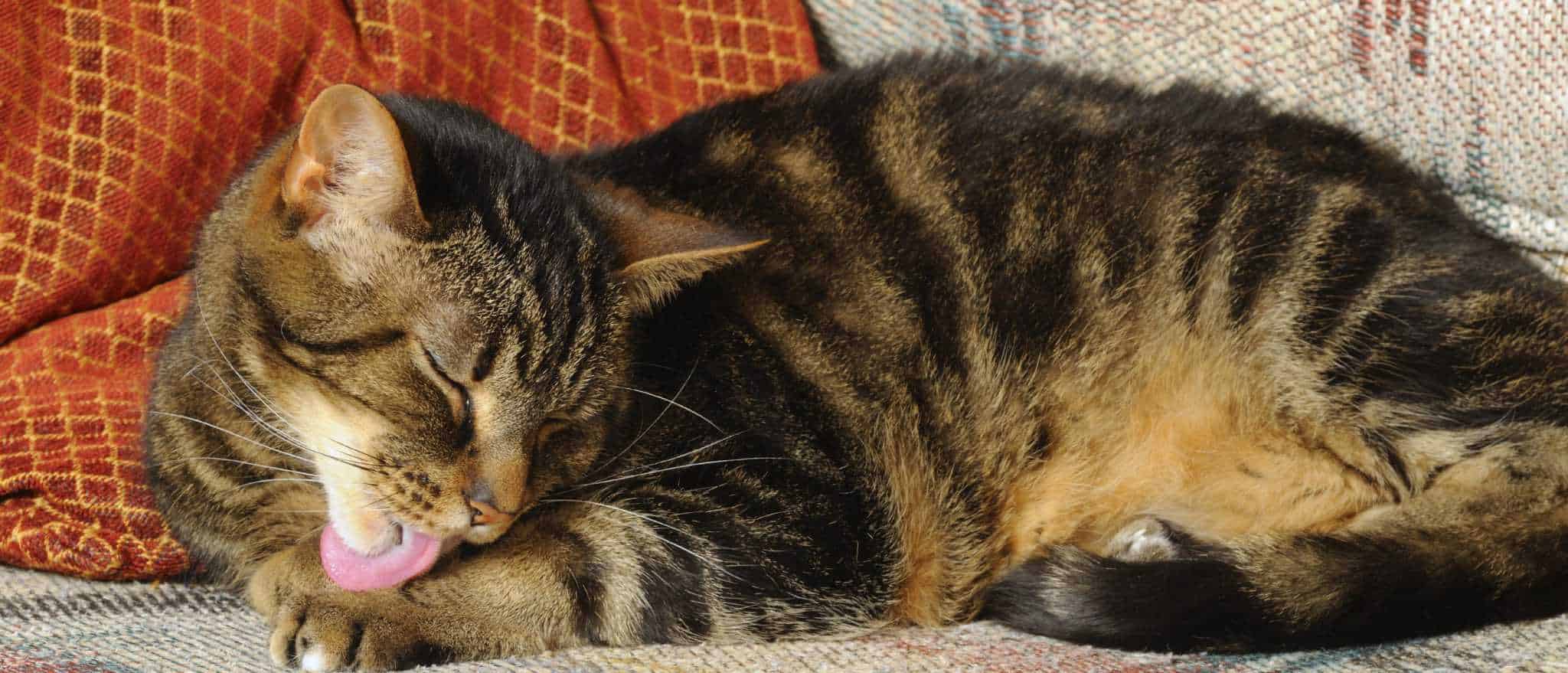Hairballs are caused by ingesting hair while grooming. Those backward facing barbs on the tongue actually trap loose hairs and favour the ingestion of hair. In a normal situation hair is simply swallowed and passes through the digestive tract and passed with faeces. A little like some extra fibre.
The problem really gets out of hand with cats bred to have long, thick coats of hair. Often the amount of hair is simply overwhelming. This is where daily brushing is important. If your cat dislikes brushing, clipping the coat every 6 months may be the best solution. We put together some tips and ideas for grooming your cat.
In cats that are itchy due to allergies, the only sign may be increased grooming behaviour and sometimes patchy areas of hair-loss. Your cat may also have little scabby areas on the skin that feel rough while petting. It is estimated that cats spend 25% of their waking hours grooming. So if your cat seems to be spending an unusual amount of time grooming himself, there could be a problem you might need to check out.
And while the occasional hairball is actually considered normal, if your cat is bringing up hairballs more than monthly you should visit your vet as there is probably an underlying cause. These causes include: flea allergies, other skin disease, over-grooming due to pain, and chronic gastrointestinal diseases such as inflammatory bowel disease or food intolerances. These are all treatable diseases that are often hidden by our secretive feline housemates.
